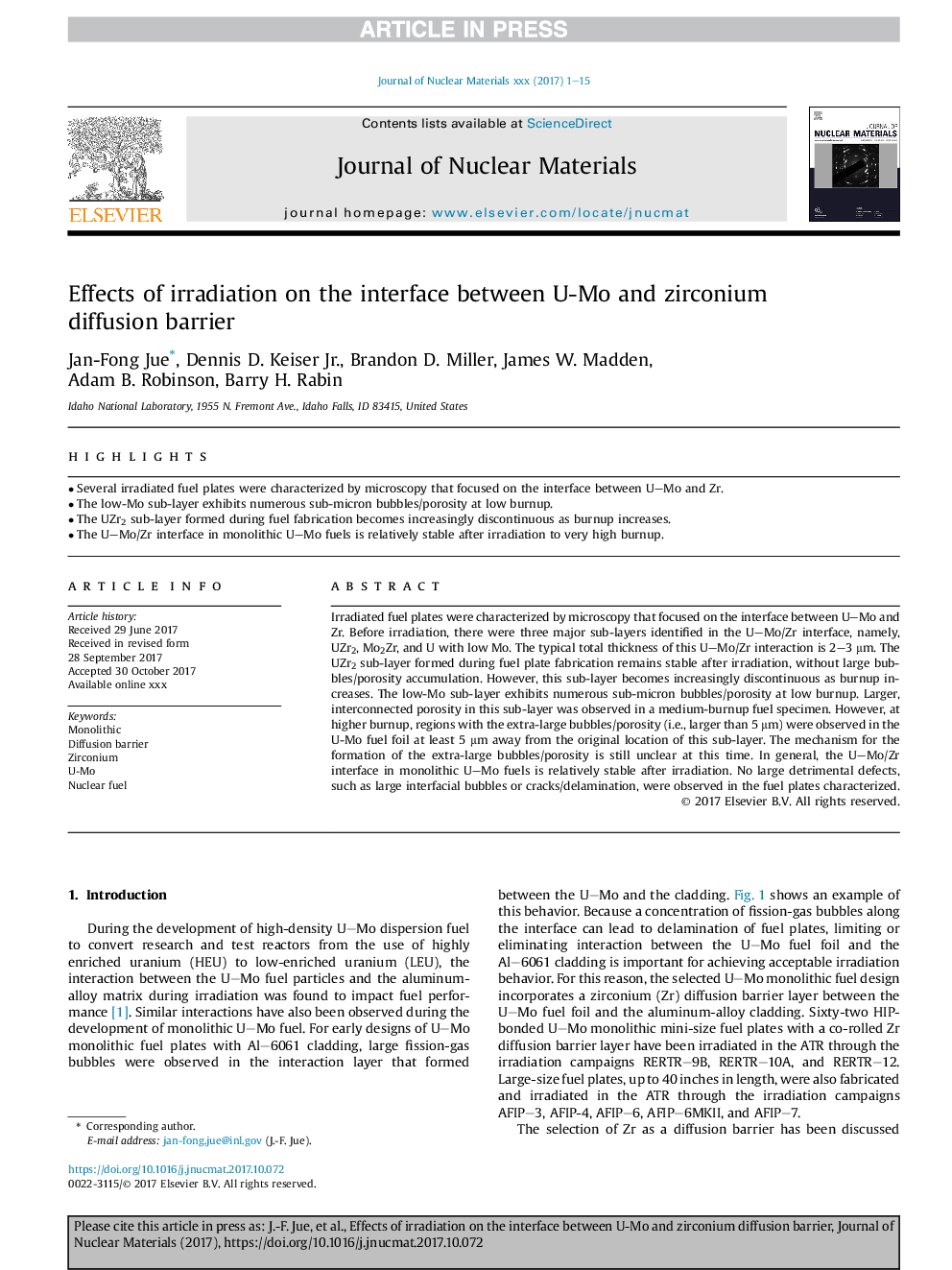| کد مقاله | کد نشریه | سال انتشار | مقاله انگلیسی | نسخه تمام متن |
|---|---|---|---|---|
| 7963600 | 1514147 | 2018 | 15 صفحه PDF | دانلود رایگان |
عنوان انگلیسی مقاله ISI
Effects of irradiation on the interface between U-Mo and zirconium diffusion barrier
دانلود مقاله + سفارش ترجمه
دانلود مقاله ISI انگلیسی
رایگان برای ایرانیان
کلمات کلیدی
موضوعات مرتبط
مهندسی و علوم پایه
مهندسی انرژی
انرژی هسته ای و مهندسی
پیش نمایش صفحه اول مقاله

چکیده انگلیسی
Irradiated fuel plates were characterized by microscopy that focused on the interface between U-Mo and Zr. Before irradiation, there were three major sub-layers identified in the U-Mo/Zr interface, namely, UZr2, Mo2Zr, and U with low Mo. The typical total thickness of this U-Mo/Zr interaction is 2-3 μm. The UZr2 sub-layer formed during fuel plate fabrication remains stable after irradiation, without large bubbles/porosity accumulation. However, this sub-layer becomes increasingly discontinuous as burnup increases. The low-Mo sub-layer exhibits numerous sub-micron bubbles/porosity at low burnup. Larger, interconnected porosity in this sub-layer was observed in a medium-burnup fuel specimen. However, at higher burnup, regions with the extra-large bubbles/porosity (i.e., larger than 5 μm) were observed in the U-Mo fuel foil at least 5 μm away from the original location of this sub-layer. The mechanism for the formation of the extra-large bubbles/porosity is still unclear at this time. In general, the U-Mo/Zr interface in monolithic U-Mo fuels is relatively stable after irradiation. No large detrimental defects, such as large interfacial bubbles or cracks/delamination, were observed in the fuel plates characterized.
ناشر
Database: Elsevier - ScienceDirect (ساینس دایرکت)
Journal: Journal of Nuclear Materials - Volume 499, February 2018, Pages 567-581
Journal: Journal of Nuclear Materials - Volume 499, February 2018, Pages 567-581
نویسندگان
Jan-Fong Jue, Dennis D. Jr., Brandon D. Miller, James W. Madden, Adam B. Robinson, Barry H. Rabin,